Week 11:
Results:
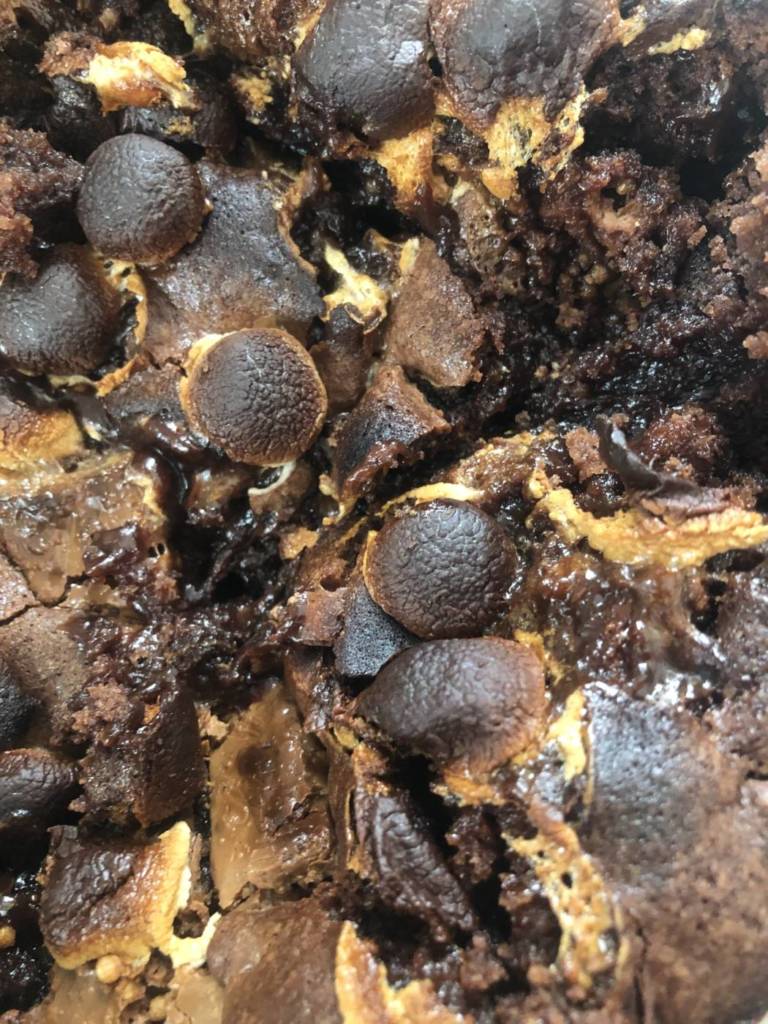
Im not a huge cake fan personally, so it was no surprise my house here at school lacked the basic ingredients. However, like the task says, make a cake with what you have. With warm weather around the corner and school nearing an end, all I can think about are summer campfires and s’mores! So by using stuff from home and kit from a summer ago, I’m going to try and make a s’mores cake-ish…..
Week 10:
Food art final~
PSA: Cookies, dry cereal, uncooked KD and All Dressed chips are a terrible combination if eaten directly after. (In case anyone thought it look otherwise)
Week: 9
Food Art:
Pancake Stack- Aislinn Thomas
This piece was pretty out there for me so to say, to cook something purely for the use of not eating was something I had not previously consider. I would usually look for more traditional mediums to work with (food, art, or building supplies) However, this being Experimental Studio, I have a much more open mind to non-traditional ways to do things. To get back on topic, Pancake Stack is a great example of using something in a different way, and already I know I want to use this idea behind my project.
I also liked the work “The Hunt” by Christian Jandowski. This piece also connected to our video art as it followed the subject while he “hunted” for his food at grocery stores. I found the filming extremely effective as it created the feeling of being in the store, and witnessing the hunt first hand. I also liked the irony in this piece, and how much easier it is now to source food, rather than in the past when maximum effort were required. The proximity of the camera to the subject also created a more personal impactful experience.
For my food-art project I have a couple of ideas;
- Photo series using the same plating equipment/background to create a series of steps for a dish (for example: preparing and placing the ingredients on the dish at. Each stage of the process, and eventually completing it with a fully garnished meal).
- Instead of using food in a non-traditional way, use other things to cook in a non-traditional way. ( Using objects that do not belong in the kitchen to prepare/cook a meal) noting any mentionable failures/successes.
- Using the audio elements of a kitchen/food (chopping, stirring, whisking, boiling etc.) to see if they are known only from association, or if the sounds that come from food and the kitchen are specific to those things.
- Tying back to AlZeri ~ using the sense of home/background in relation to food.
After writing down and thinking more deeply about my ideas, I now know I want focus on inspiration from either Aislinn Thomas, as I cannot get the idea of thinking in non-traditional ways out of my head. Or the work of Basil AlZeri from Week 7 because I really connected with the idea of bringing a sense of home/heritage to another place, as that is something I do often while living away from home during University. To incorporate this into my project I want to eat foods that bring me comfort or remind me of home. I also want to include a visual element like the skype call in AlZeri’s work. I decided against the photo series idea as I was not happy the way they turned out. It looked only like a photo of a meal, instead of a photo series like I had intended.
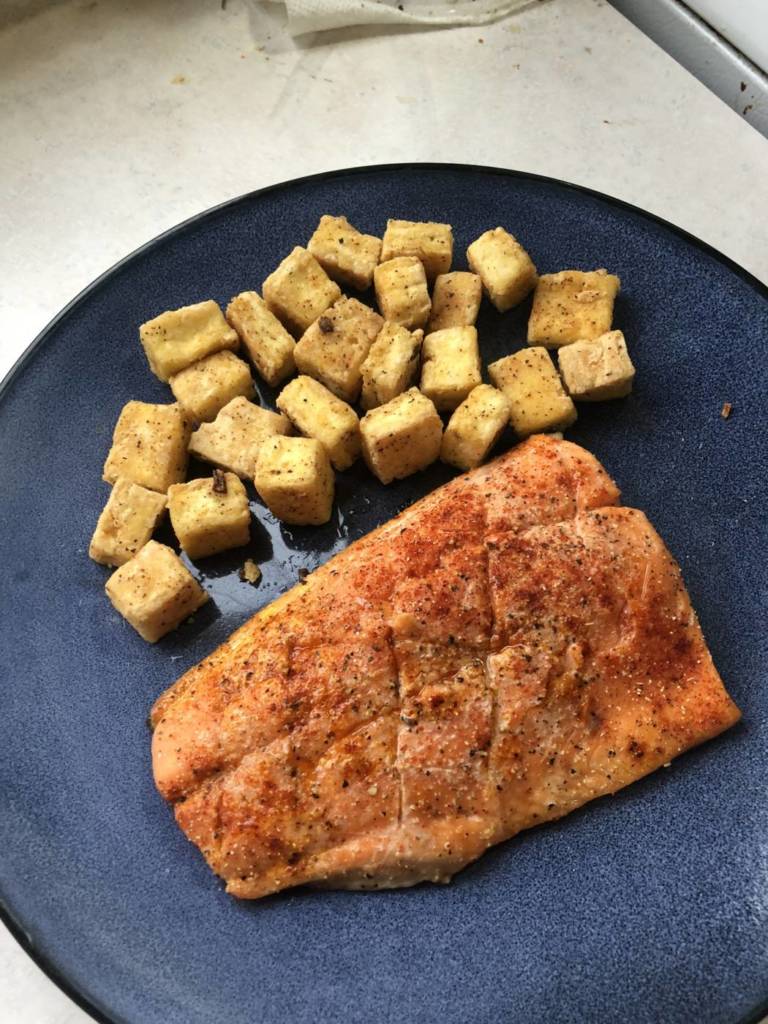
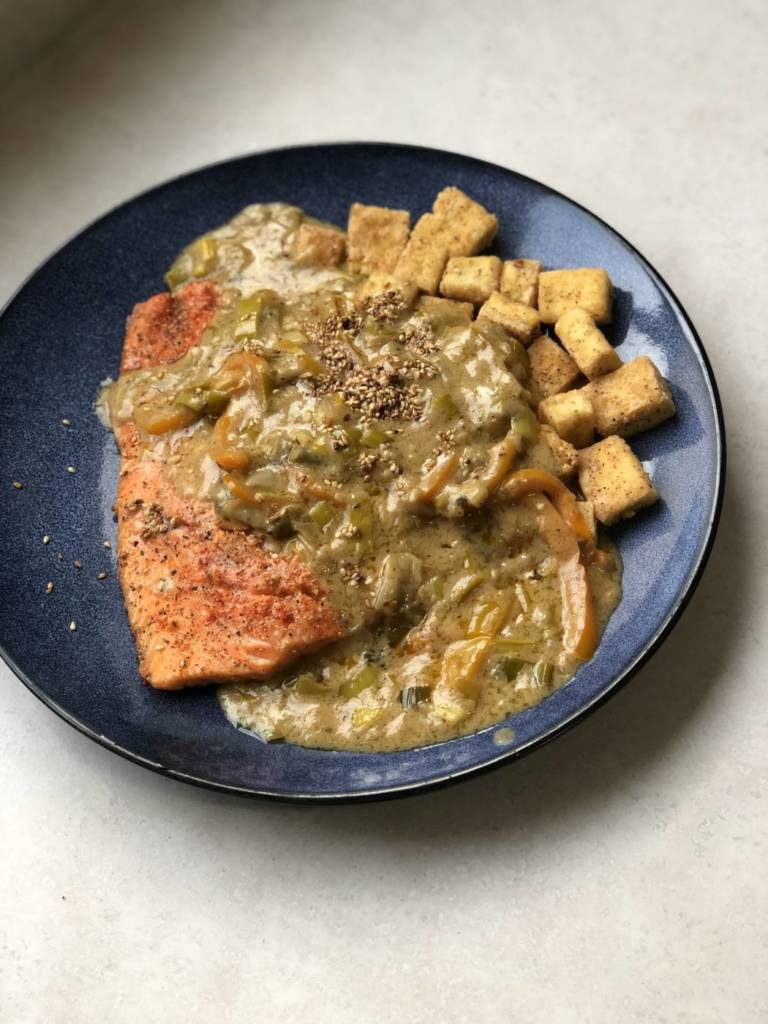
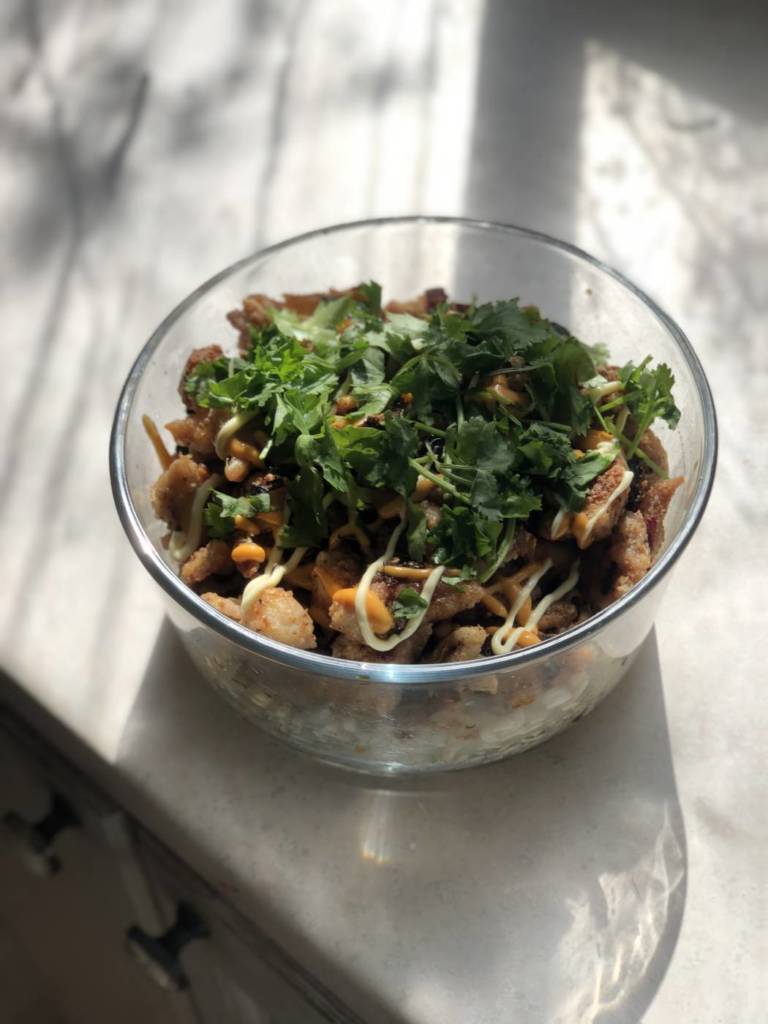
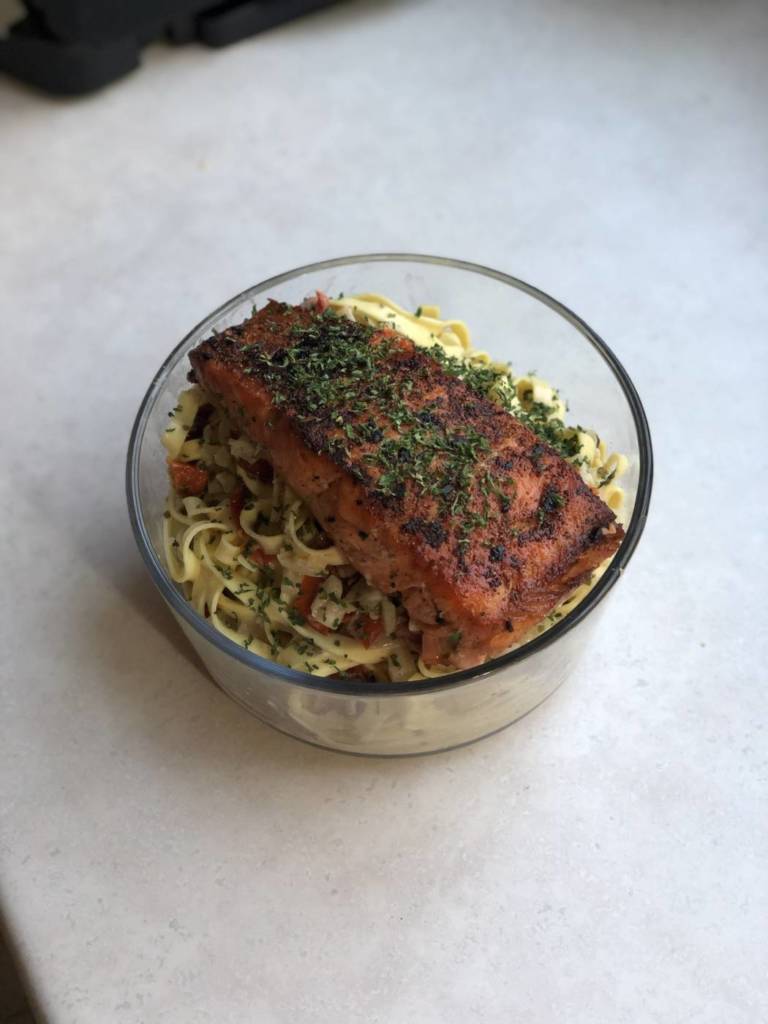
The photos above are from the two series I wanted to try, one being the elements of the plate, being plated, the other was to have uniformed dishes and have the food be the actual art, however neither of my ideas panned out.
Week 8:
The Rise and Fall of Bread:
Bread is something that for me has a lot of meaning, but not for the traditional reasons per-say. The traditional form of bread being eaten, and me not eating a lot of bread has resulted in me forming a different relationship with bread. Bread for me is about the atmosphere created by fresh bread. On a number of occasions through my life, the aroma of freshly baked bread has been the perfect ending or addition to something already great. A. quick example is when I was on vacation in Costa Rica, there was a bakery near where I stayed and each morning I would wake up to the sun, sand and surf accompanied by the smell of freshly baked bread. Now, fresh bread is obviously something that I like the smell of, but to specifically remember the bread scent from a trip that happened years ago, got me really thinking of what it means to me, and what that is, is comfort and a feeling of home. This feeling also comes from me waking up at home to the smell of fresh bread on days that we were having family or guests over. My mom would often bake a loaf or two of bread for our guests to snack on, and so whenever I would look forward to family gatherings I also had the smell of bread to look forward to. Everyone in. my family eats more bread than I do, as I am not a fan of sandwiches. I also rarely eat breakfast (the meal my family most often consumes bread with) so it is rarely the “centre” of my meals. Instead the centre and comfort revolve more around noodle/pasta dishes. Traditionally there isn’t a ton of bread in German cuisine, and because of this I haven’t gotten use to eating it as so. I think popularity in bread making has gone up during the pandemic because so many more people are confined to their homes. This results in people starting hobbies or trying new things, bread is also something that is prominent in the majority of households, so it is something that is common to try and do yourself. Overall I found the podcast extremely interesting, this was because I had no idea the history behind bread and how important it is outside of something to eat. Something memorable for me from the podcast was how “bread” travelled around through Europe and to the Mediterranean because it was so important that when people left areas, they felt the need to continue/bring bread. Cooking and art making for me are tightly related as I see a lot of artist characteristics in cooking, there are times when precision is everything, and having a steady hand and good touch can lead you to the perfect plate or painting, but then there are also times of pure creativity and madness. The gestures of stirring, cutting, folding, rolling etc. are all repurposed through the movements needed for art, brush strokes, sketching, shading, etc. I also think that a lot of food is art just based on the visual beauty of it, there is something about using vibrant fresh greens on top of a meal that for me represents the artist/chefs signature on the completion of their work.
Although I was absent during the class bake, I wanted to complete the exercise anyways, so I baked these with my Mom when I was home for a weekend. The smell of the fresh bread instantly transported me back to Costa Rica.
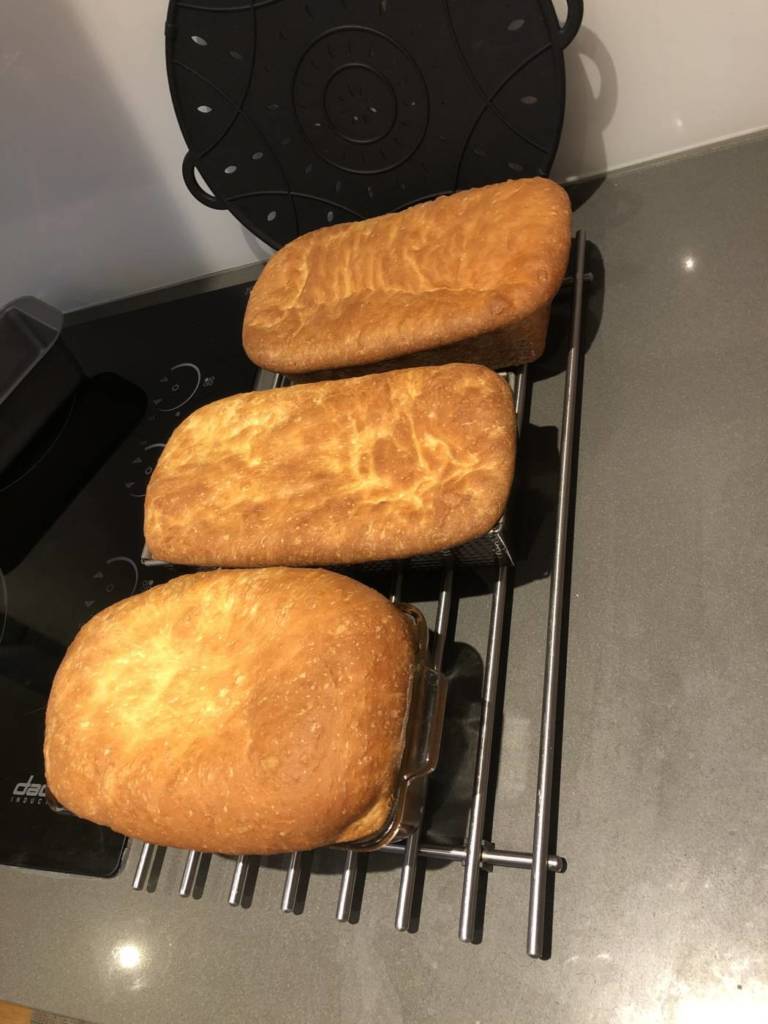
Zoom Video Art:
Like I stated earlier in my draft/proposal, I wanted to focus on distortion and the lack of communication caused by technology. So for my project I filmed three videos of my reactions to words being announced (just to trigger different emotions) and wanted to see the difference in effect depending on how close the camera is, but also on which part of the face. The first video was my whole face, and portrayed the most emotion, in the other two videos, I focus on the corner of my eyebrow and the point directly between my eyes. I wanted to try different locations and zooms because I was curious about what information could be pulled from the littlest amount of detail. I also purposely left out my body and the audio because it further forces the audience to try and attain information from expression only. (The videos can be found at the bottom of the page, not sure why they got sent there, just another example of the technical difficulties we face in our everyday lives) I wanted to do something similar to Thomas’ work with the focus being on the face itself and what that can say or what it can hide by being disfigured or dis-formed by movement, or technical aspects. I also wanted to tie in my favourite part from Newsome’s work ‘Suck Teeth’, that part being the very simple background, I think i was able to achieve this, and I believe it was successful in directing all of the focus to the expressions and movement in my face.
Week 7:
Suck Teeth Compositions:
This video was really interesting to me, as it had equally a visual element as it did an audio element. The thing I found most striking in this video was how I felt present when I heard the sound of teeth sucking. By having more than one subject in frame, and by having overlapping sounds, Rashaad Newsome was able to transport the audience to a front row in person experience. I also really liked the contrast of a plain light background because it allowed for all the focus to land on the subjects and the audio. The video is very well shot, all the shots are symmetrical and level, this gave the piece a very put together appearance. If the strategies used by Newsome had not been used I think the experience would have been very different, I think that if the background was different it would distract from the subjects and I think if the sound was only made once, it would have felt like more of a performance rather than an experience. What I mean by that is, the sound/gesture is a natural thing to do, so do make it only once it would stand out more as something that is being performed for the camera. I think the subjects were told to make the noise, and little else, because they each have their own expression/reasons/characteristics that make them/teeth sucking unique.
The Mobile Kitchen Lab :
This work by Palestinian artist Basil AlZeri, is amazing! It was really interesting to see how he was able to create the sense of home, even when he is so far away from his. I also found this particularly special as in the past I have facetimed my Mom while trying to cook dishes from her German background. I also find the connection between his home and his food very interesting, because that is something that is common among my Mom and her parents as well. They constantly discuss how different things are prepared in different ways based on where/when/how they are grown or picked. The technology in this is also important, because it allows for AlZeri to visually show his mom what is being done, if this were to be done over the phone using only auditory communication the outcome and the whole experience would be much less impactful. I don’t think much was said to the participants because the goal was relatively straight forward, and did not involve anything that out of the ordinary.
I found both works very powerful as they both dealt with years and years of struggle based on race, religion, geographic region and violence. This information made the positive areas in the pieces really come to the forefront and highlight the importance of history behind the reasoning. I also think that it offers amazing contrast of coming from a historically “bad” place and presenting the good in that place.
Week 6: Zoom Art Proposal
For my Zoom art project I wanted to focus on the Vivian Castro article and the information/subject matter she covered. I found there was a ton of information on the importance of the face, and facial expression while communicating. Castro mentions the difference or change from going to seeing people in person and being able to read their body language to solely interacting with the face. I find this change interesting because many studies show that upwards of 90% of communication is non-verbal, so to take away the body, is to almost take away all of the social cues and ways to detect meaning/intention. The only thing we are left with is the actual verbal details and other information we can extract from the facial expressions. Now, the verbal details are theoretically where the actual information is, but there are many things that can affect this as well, things that Castro mentions like; zoom fatigue, noise distraction, family or pet distractions. Another factor that can impede incoming information would be technical problems.

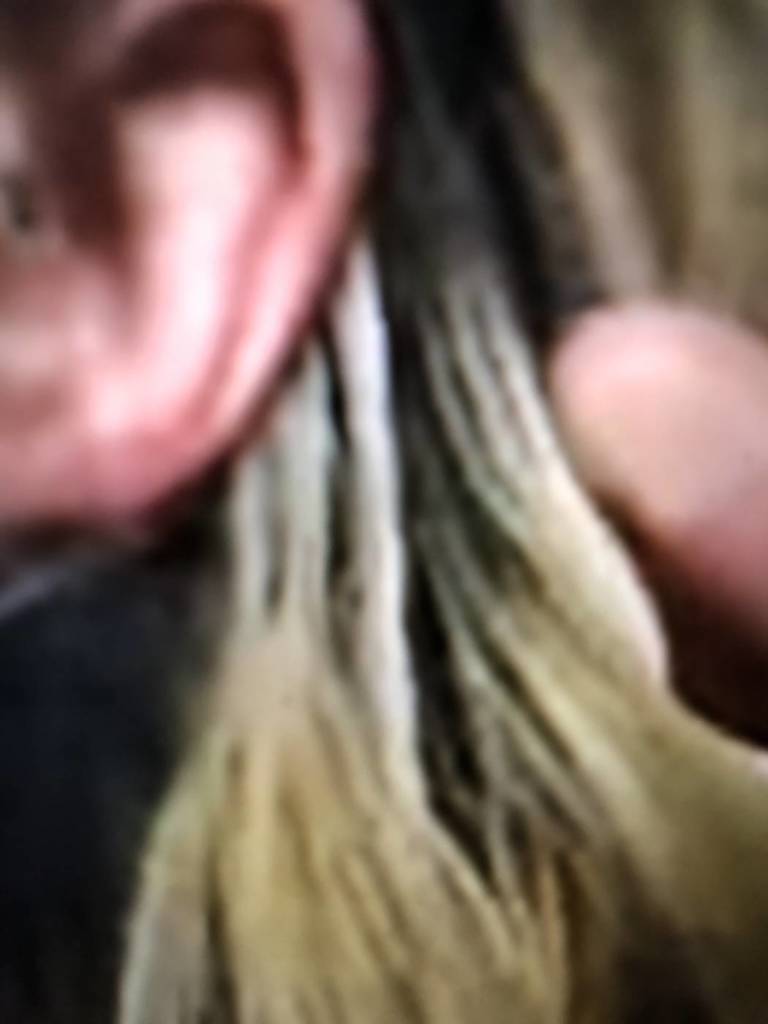
Historically, video art has been very experimental, and is constantly changing due to technological advancements. A time in video art history I find particularly interesting, and what I want to focus on for my project is the human body/face. Pipilotti Rist has been a hugely popular name in video art, and she constantly is using it to expand her art. Her piece “Be Nice To Me (Flatten 04)” is particularly interesting to me because I am fascinated by what can be done by sampling zooming to distort something. In my project I want to focus on distortion and on non-verbal communication, to represent the distance and confusion caused by technology. In the images above, Rist’s face is barely recognizable because of the zoom, this takes us a step even further from communication and being able to read signs, which is what I want to achieve in my video~ Up close and personal, but not able to attain information due to technology, and communication style.
Week #4
When deciding what to do as an intimate action, I immediately thought of the act of eating. Eating is something that is very personal and in most scenarios involves only the one participant, but I wanted to stretch that into something that pushed the number of “participants” to a multiple. I also found on the guided audio walk that it reminded me of audio tours, unsurprisingly. However, I found myself thinking about being on those and how much of a group activity they are, it made me think about doing this. audio tour through tress or the forest, and how different of an experience the crowd or other participants can give to an activity. My decision completely changed from my initial idea of doing a tour of my house with one plant, as I felt no intimacy in the action, and this ultimately landed me on the act of eating being intimate and my video being the way I wanted it shown.
Week #3
For the Banner project I wanted to focus on a more simple, minimalist approach. From the “Dirty Words” article I found myself glued to the phrase “interesting also flirts with boredom”. I wanted to create a banner that was very plain and simple, to represent the connection between boredom and interest. The piece “Two Equal Texts” inspired me with the idea to use black and white lettering versus an opposite background contrast. Seeing how vibrant the letters were set against the opposite background really swayed me to work with the the two tones to create heavy contrast. I also like his very ordinary text and this reminded me of interesting also entailing boredom.
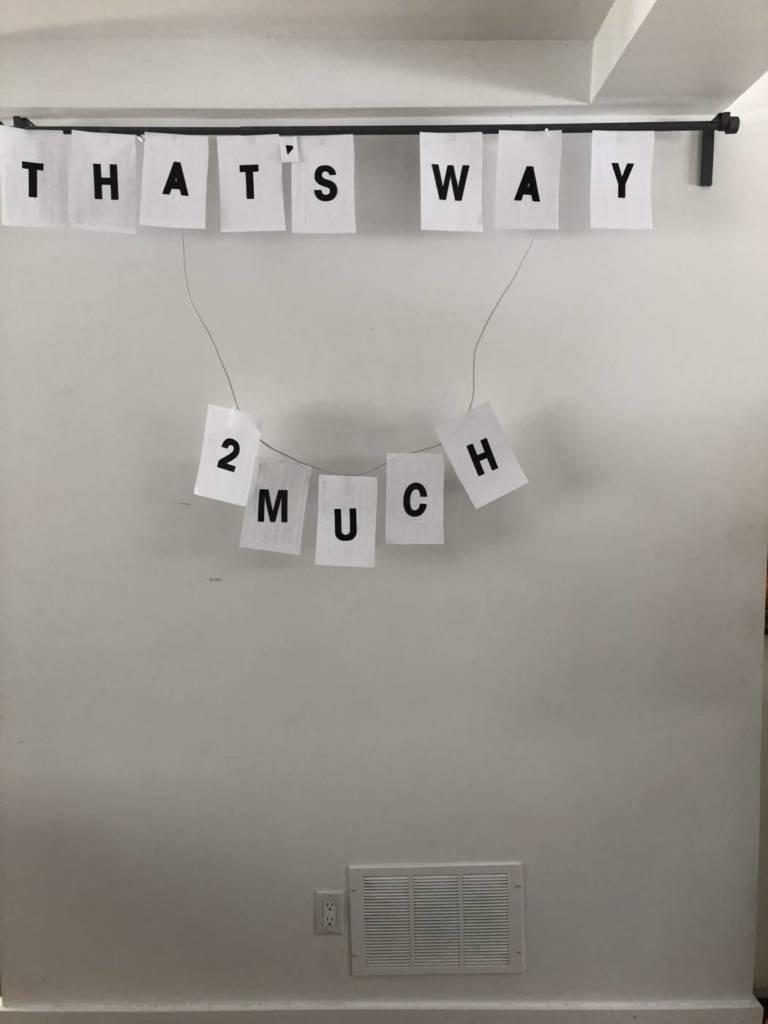

Week #2 Assignment
For this week’s assignment, we were asked to compare and contrast two works that incorporated text into them, and touch on the core elements of these art works. It was hard to choose which two to compare because there were so many amazing works! However, I have narrowed down my selection to Shelley Niro’s “The Shirt” and Jon Rubin’s “The Last Billboard”. I chose these two because I find them very different, but both very impactful. Obviously there is a major difference in the presentation of these two projects, Niro uses a simple white t-shirt with text on it, while Rubin uses an entire billboard to convey his message, I think both are successful, Rubin’s work will access mass people with its location and size while Niro uses irony to transform a known phrase into something with a much deeper meaning. I think Niro using a t-shirt is effective because it is a common vacation purchase for many people, and it is a very blunt way to explain the atrocities committed against the indigenous. Rubin’s work “The Last Billboard” uses a similar bluntness as Niro in his work, stating there will be black people in the future, which is also somewhat ironic. Viewers can relate to Niro’s work by being aware of the phrase and seeing the twisted ironic side. This can also be said for Rubin’s work, where viewers are faced with a blunt truth.
Week #1 Notes:
Nina Katchadourian’s Book Stacks projects:
- Started in 93’
- Stacks of books, that are ordered based on their titles to create a sentence
- The goal was to symbolize what was held in the libraries
- The project had multiple locations and re-creations, using libraries, private collections, and home libraries
- The works were often presented where they were found
Video:
- How books can tell a story
- How books can represent a person
- Think about the books in all terms (physical aspects, titles, author, style)
- Does your library represent you?
Dave Dyment One Billion Years (Past and Future), 2012:
- This collection represents the past, present and future by using the information inside the books
- The Books selected by Dyment use the inner contents of the book to represent a timeline of one million years
- Bright coloured books create a visually stimulating image, with lots of areas to focus on
- The use a prominent dark background suggests similarities to the work of Katchadourian
Ryan Park, Untitled, 2009:
- This work differs from the others as it offers an open book style of stacking, rather than the traditional stacking used in the previous works.
- The use of colour is very apparent in this work, as the books transition from cool to warm coolers, then back to cool
- The background is again a solid colour, but this example uses a white background which brings more openness to the work
Write:
- Some strategies used by the artists would be choosing specific books based on specific characteristics, for example; Katchadourian stated that she was trying to create sequences with her books, so the titles would be the deciding characteristic in that case. She also mentioned representing the owner of the books, this can be done by using the titles, or it can be done with symbolism by using physical aspects of the book such as colour of the outside, size, shape, condition and many more.
- Colour was used heavily by Park in the selection of his books, as can be seen the ascending then descending colouration of his work. A strategy used by Dave Dyment; he used the information written inside the books to create a timeline. Using the contents of the books can be a great way to represent someone or something because it gives you a well-rounded appreciation for whatever it may be.
My Process:
Unfortunately, my lack of interest in reading resulted in me owning only four books… at first I was stumped on what to do, my roommates only had textbooks and I didn’t want to use material that has no connection to me, while I still had the four other options. As I decided to use my books, I noticed how figuratively they represented me quite well.
The titles of my books are the following:
- Breakfast of Champions, Kurt Vonnecut
- The Art of Racing In the Rain, Garth Stein
- Die Rich and Tax Free, Barry Kaye
- Gucci Mane, Autobiography with, Neil Martinez-Belkin
I am a huge fan of rap/hip-hop (Gucci Mane), I love cars, especially fast ones. The book also heavily features a dog, which resonates with me because I’ve owned dogs all my life (The Art of Racing In the Rain). Die Rich and Tax Free, connects to one thing that I am known for which is my spending habit, the book was given to me by my former employer (a financial advisor) who constantly criticized my spending, till the point he found a book that has helped to reduce my spending. The last book, Breakfast of Champions, I have almost no ties to, besides the irony of me not typically eating breakfast, and the honest not knowing of where I got the book from.
For my “stacks” I wanted to make my library to seem more diverse than four books, so i tried several angles and positions till I arrived at three that i liked, I liked these three because of how different they are, I think in some ways it symbolizes how vast my own interests are.
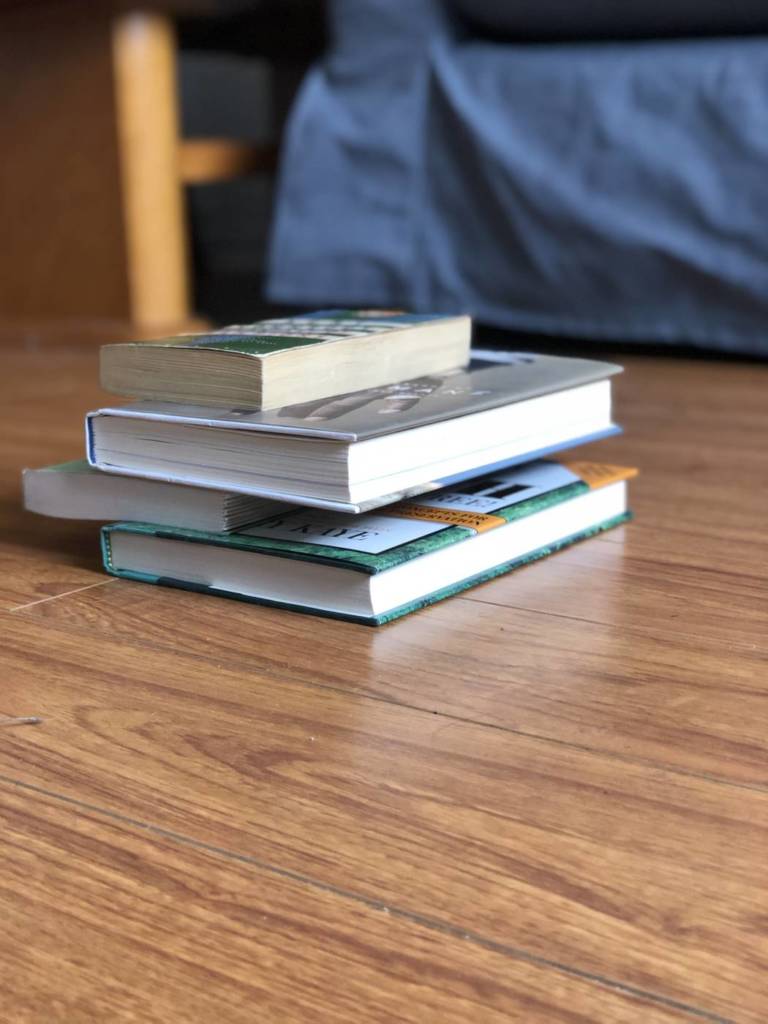

For my stacks I wanted to make my library seem large and vast, so I tried to work with different shapes in order to accomplish that. I also wanted to incorporate some of Ryan Park’s ideas because I liked the look of the books being open, as I feel the back cover can offer a little more insight into the library. I also wanted to incorporate Katchadourian’s location selection, of stacking the works in the location they come from, so I decided to photograph my images inside my bedroom.

Hi Thomas,
Week 1:
Katchadourian notes complete and thorough
3 Book stack images partly complete – and not sure how you are intentionally creating a portrait, or a poetic new phrase, or extra meaning. Not clearly pictured or described.
Week 2:
Notes on two text works complete, though very minimal. Need to see more evidence of curiosity and full engagement with material I assign.
Week 3:
Text banner exercise and description complete – however you did not use found text from the article as assigned – and this was an important part of the point of the assignment – to engage in reading, and to see words as materials, and to use found words and play with material and context. Not clear if you are understanding critical ideas at play
Week 4:
Nature video – needed more intention with sound, stability, and effort at the engagement with things. Hard to see how this is related to the audio walk or other works in the lecture. It is inconsistent with your descriptions of audio walks, being together, jungles, etc. All a bit thin – and not clear if you looked at and reflected on all of the lecture materials to inform this work.
Excercises need to show evidence of historical precedents for the work – art is a conversation and you have to listen to ideas and strategies of artists before you and working today – to participate.
Try to expand your preparation, your in progress notes and evidence of thinking and reflection would be helpful in your blog. Talk to Nathan and improve technical investment and effort to make things look better and as intended.
Try more experimentation (not knowing what will happen) and adventurousness – as in creating tension, discomfort, and surprise – you may need to push yourself, be more curious and ambitious.
I suggest you attend and engage more in class discussions and activities – it will help your work!
If you would like to talk with me about your work in progress, readings, exercises, one-on-one comments on your work, and grades – send me an email in the morning to book a 15 minute appointment during the optional in person hours: Thursdays 2:30 – 4:30
And you can show up to a zoom meeting with Nathan anytime during these hours to ask your questions, and get tech support for using software and finishing your projects:
Mondays and Thursdays 1-4pm
Hi Thomas,
We would have liked to see more of you and discuss these proposals to make them work more effectively to communicate your ideas – for example why the colourful abstract video background in your food video? How can we better appreciate the weird combination of uncooked snack foods you were consuming and feel the meaning of the act? It was good to see and chat with you when we could, but I know it was a difficult term for everyone. Thank you for engaging and reflecting on the lecture materials, I hope you got some good stuff from the class, hope to see you again in Experimental 3!
Diane